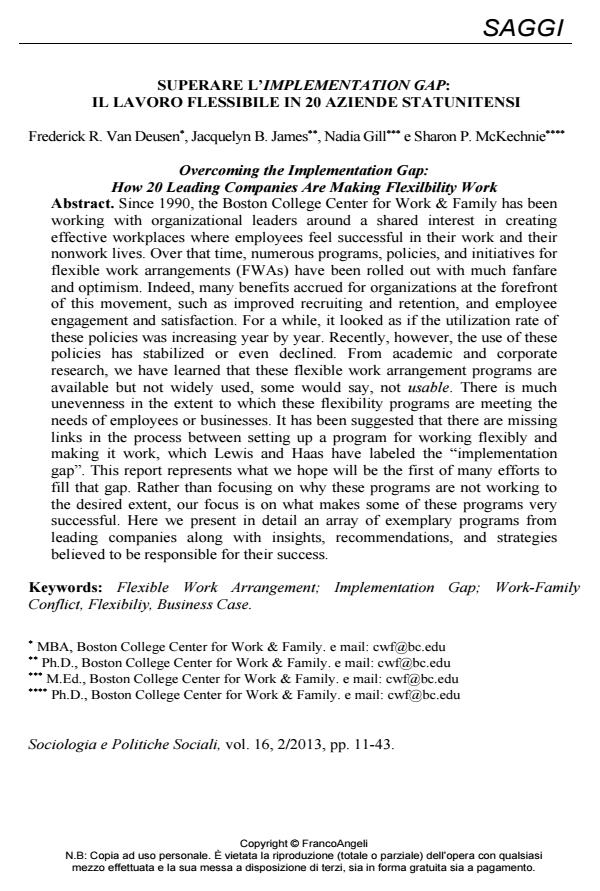Superare l’implementation gap: il lavoro flessibile in 20 aziende statunitensi
Journal title SOCIOLOGIA E POLITICHE SOCIALI
Author/s Frederick Van Deusen
Publishing Year 2013 Issue 2013/2
Language Italian Pages 31 P. 11-41 File size 375 KB
DOI 10.3280/SP2013-002002
DOI is like a bar code for intellectual property: to have more infomation
click here
Below, you can see the article first page
If you want to buy this article in PDF format, you can do it, following the instructions to buy download credits

FrancoAngeli is member of Publishers International Linking Association, Inc (PILA), a not-for-profit association which run the CrossRef service enabling links to and from online scholarly content.
Since 1990, the Boston College Center for Work & Family has been working with organizational leaders around a shared interest in creating effective workplaces where employees feel successful in their work and their nonwork lives. Over that time, numerous programs, policies, and initiatives for flexible work arrangements (FWAs) have been rolled out with much fanfare and optimism. Indeed, many benefits accrued for organizations at the forefront of this movement, such as improved recruiting and retention, and employee engagement and satisfaction. For a while, it looked as if the utilization rate of these policies was increasing year by year. Recently, however, the use of these policies has stabilized or even declined. From academic and corporate research, we have learned that these flexible work arrangement programs are available but not widely used, some would say, not usable. There is much unevenness in the extent to which these flexibility programs are meeting the needs of employees or businesses. It has been suggested that there are missing links in the process between setting up a program for working flexibly and making it work, which Lewis and Haas have labeled the "implementation gap". This report represents what we hope will be the first of many efforts to fill that gap. Rather than focusing on why these programs are not working to the desired extent, our focus is on what makes some of these programs very successful. Here we present in detail an array of exemplary programs from leading companies along with insights, recommendations, and strategies believed to be responsible for their success.
Keywords: Flexible Work Arrangement; Implementation Gap; Work-Family Conflict, Flexibiliy, Business Case
Frederick Van Deusen, Superare l’implementation gap: il lavoro flessibile in 20 aziende statunitensi in "SOCIOLOGIA E POLITICHE SOCIALI" 2/2013, pp 11-41, DOI: 10.3280/SP2013-002002